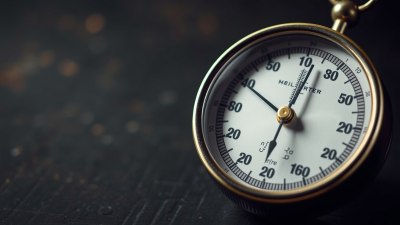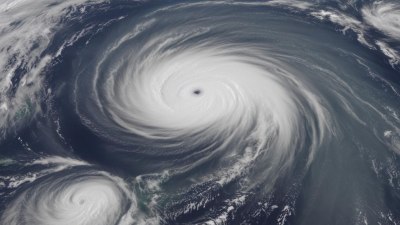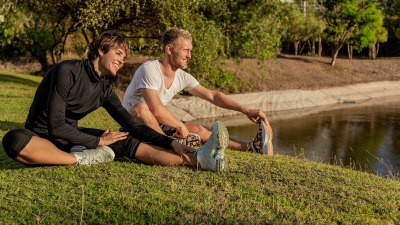The Science Behind Dry Thunderstorms
Explore the unique phenomenon of dry thunderstorms and their atmospheric science.

This image was created with the assistance of Freepik
Dry thunderstorms, a captivating meteorological phenomenon, occur when thunderstorms produce lightning and thunder without significant rain reaching the ground. This phenomenon typically arises in regions with a dry atmosphere, where the air below the clouds is too arid for precipitation to survive its descent. Understanding the science behind dry thunderstorms entails exploring their formation, characteristics, and the impact they have on their environment.
To comprehend dry thunderstorms, one must first appreciate the basic principles of thunderstorm development. Thunderstorms are formed through a complex interaction of moisture, instability, and lift. Generally, these elements coalesce in warm, humid conditions, leading to the formation of towering cumulonimbus clouds. However, in dry thunderstorms, the moisture content in the atmosphere is significantly lower.
Formation of Dry Thunderstorms
The formation of dry thunderstorms primarily depends on atmospheric conditions. The process begins with warm, moist air rising due to heat at the surface, which is known as convection. In typical thunderstorms, this rising air cools and condenses, forming clouds and precipitation. In a dry thunderstorm scenario, however, the atmosphere may have a dry layer beneath the cloud base. As the moisture-laden air ascends and cools, the precipitation forms but immediately evaporates before it can reach the ground, a process known as virga.
Characteristics of Dry Thunderstorms
One of the defining characteristics of dry thunderstorms is that they produce frequent lightning strikes, which can ignite wildfires due to the lack of rain. In fact, many areas that experience dry thunderstorms are also prone to drought conditions, making the landscape extremely susceptible to fires. In addition to lack of precipitation, dry thunderstorms can produce strong winds that can exacerbate fire risks and lead to damage. The intense heat associated with the uplift can create downdrafts, which can stir up dust and lead to dry microbursts, localized downdrafts that can cause sudden and strong winds at the surface.
Geographic Distribution
Dry thunderstorms are particularly prevalent in arid and semi-arid regions across the globe, including the western United States, parts of Australia, and regions in Africa. The Sierra Nevada mountains in California, for instance, are known for their late summer dry thunderstorms that occur away from traditional storm season. These storms can happen from late spring through early fall and contribute significantly to the wildfire risk in the region.
Impact on Ecosystems
The occurrence of dry thunderstorms has profound implications for local ecosystems. Scientists have noted that while lightning can initiate fires that may harm certain species and habitats, these fires can also play a role in maintaining ecological balance. Many plants are adapted to survive and thrive in post-fire environments, benefiting from the nutrient-rich ash and reduced competition. Additionally, certain animal species rely on the new growth that occurs after a fire, illustrating the complex relationship between dry thunderstorms, fire, and ecology.
Fire Risks Associated with Dry Thunderstorms
One of the most significant impacts of dry thunderstorms is the heightened risk of wildfires. The lightning strikes produced during these storms can ignite dry vegetation, leading to rapidly spreading fires, particularly in regions suffering from prolonged dry conditions. Firefighters often face challenges in combating these fires due to the unpredictable winds and difficult terrain characteristic of areas affected by dry thunderstorms. Although lightning often ignites spot fires, the absence of rain means that these fires can grow quickly and cover extensive areas, radically altering landscapes.
Climate Change and Dry Thunderstorms
With climate change influencing weather patterns globally, researchers are concerned about the future frequency and intensity of dry thunderstorms. As global temperatures rise, warmer air can hold more moisture, potentially leading to increased evaporation rates and drier atmospheric conditions. This change raises questions about the likelihood of more frequent dry thunderstorms, particularly in already drought-prone areas. Scientists are actively studying the implications this could have for fire risk, agricultural practices, and water management in regions that experience these storms.
Preparedness and Management
Given the risks associated with dry thunderstorms, proactive measures are crucial for communities prone to these events. Management strategies can include creating defensible space around properties, employing controlled burns to reduce excess fuel load, and developing comprehensive fire response plans. Public awareness campaigns can also educate residents about recognizing the signs of dry thunderstorms and implementing preparedness measures such as evacuation plans and emergency kits.
In conclusion, the scientific exploration of dry thunderstorms reveals their complex interplay between atmospheric conditions and ecological impacts. While they pose significant risks in terms of wildfires, they also can contribute to ecosystem resilience and diversity. Understanding the nuances of dry thunderstorms allows us to better prepare for their consequences and potentially mitigate their adverse effects in a changing climate. As research continues, scientists will refine our understanding of how these phenomena will evolve and what that means for both natural environments and human communities alike.











